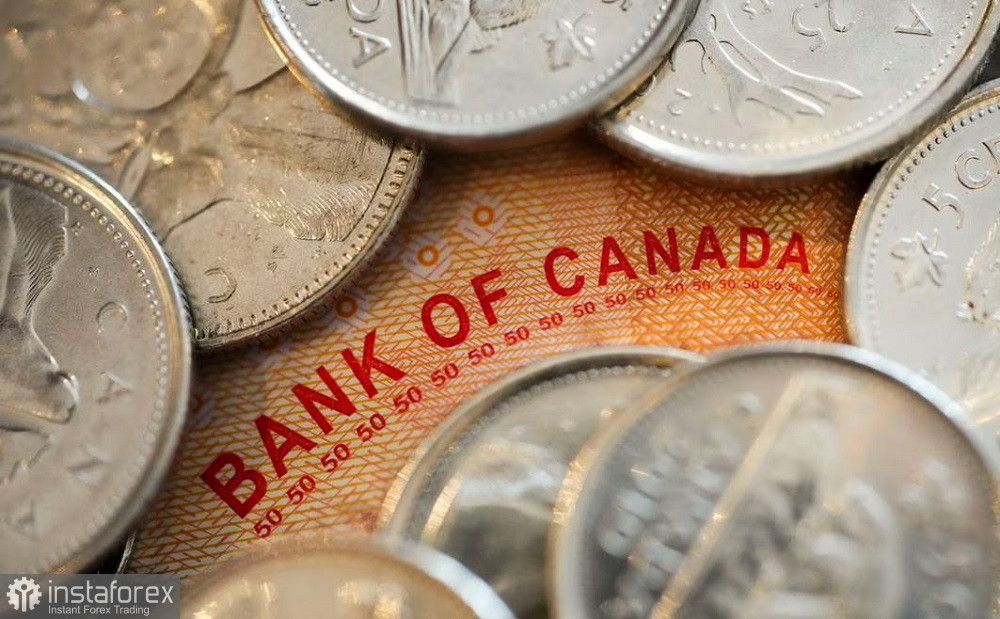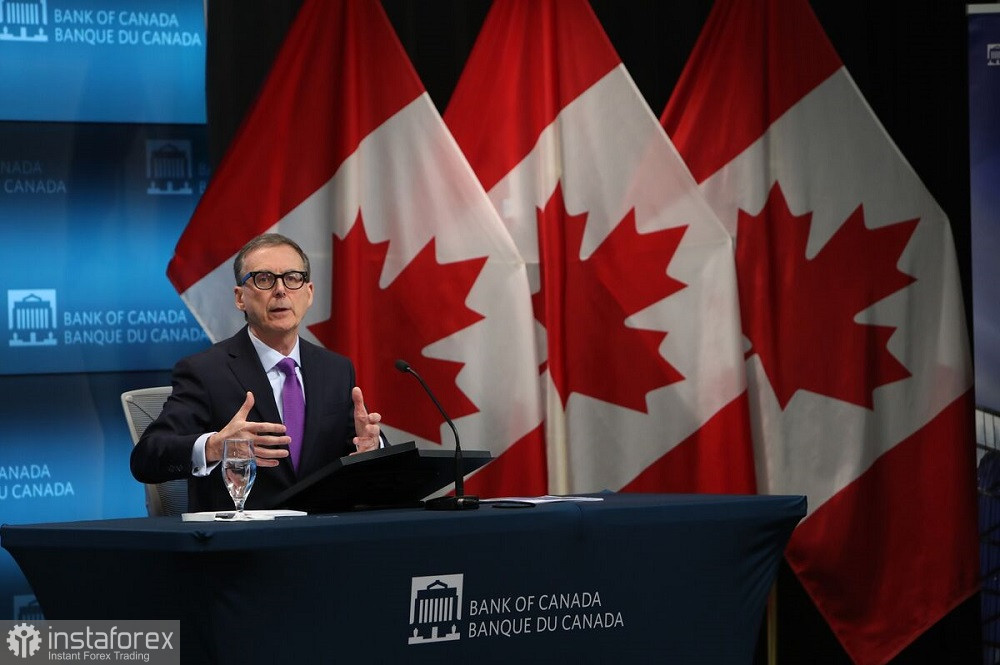The Bank of Canada will take place on April 12, Wednesday. On the one hand, the formal outcomes of the April meeting are predetermined: there is no doubt that the Canadian central bank will keep all monetary policy parameters unchanged. On the other hand, there is still some intrigue - primarily regarding the rhetoric of Bank of Canada Governor Tiff Macklem in the context of prospects for a rate cut in the second half of this year. There are rumors around the market, so their refutation or (even more so) vague confirmation will trigger strong volatility for the USD/CAD pair. Therefore, we can confirm that the April meeting will not be "unremarkable," even despite the predictability of the formal outcomes.
Basic scenario
Let me remind you that a month ago, following the March meeting, the Canadian central bank kept the key interest rate at the previous level (4.5%). In the accompanying statement, the Bank clarified that it intends to maintain the rate at this level further – provided that the country's economy develops in line with forecasts.

Since the March meeting, new reports have been published regarding inflation (for February) and the labor market (for March). The figures suggest that the central bank is likely to maintain the rate at the previous level in April. There is currently no basis for resuming a hawkish course.
For instance, the overall Consumer Price Index in annual terms came in at 5.2% (with a forecasted drop to 5.4%). The indicator has been consistently declining for four straight months. The core CPI showed a similar trend: after a January increase to 5.0%, it dropped to 4.7% in February. Unemployment remained at 5.0% in March, with a forecasted increase to 5.1% (the indicator has been at this level for four straight months). The number of employed increased by 34,000, with a forecasted growth of 10,000. The number of full-time workers increased by 18,000, while the number of part-time workers increased by 16,000.
All this suggests that the Canadian central bank has every reason to maintain a wait-and-see position at the April meeting.
Given that maintaining the status quo is the basic and most expected scenario, its implementation is unlikely to have a significant impact on the USD/CAD pair. However, Macklem's rhetoric regarding the central bank's next actions could trigger increased volatility.
Rate cut prospects
Last week, Reuters published a survey of more than thirty economists from major banks regarding the Bank of Canada's next steps. Most of the respondents (22 out of 31) expressed confidence that the central bank would most likely keep its key interest rate at 4.50% until the end of the current year. However, nine disagreed with their colleagues: in their opinion, the Bank will undertake at least one rate cut of 25 basis points by the end of the current year.
It is noteworthy that last month, Macklem mentioned that at the moment it is still too early to talk about any steps in the other direction. Such a vague formulation suggests that the Canadian central bank theoretically allows for the implementation of a dovish scenario.

If, following the April meeting, Macklem does not categorically refute the corresponding rumors, the Canadian dollar will come under pressure, although the likelihood of a rate cut by the end of 2023 is quite small.
Conclusions
The loonie has recently been ignoring "domestic" statistics and is essentially following the greenback, which demonstrates contradictory dynamics, reacting to the strengthening/weakening of risk-averse sentiments in the markets.
If the Bank of Canada keeps rates unchanged on Wednesday and does not discuss the conditions for implementing a dovish scenario, the Canadian dollar may strengthen. A similar reaction is expected if Macklem refutes rumors of a possible rate cut in the second half of the year. However, if he is cautious in his statements and leaves "all doors open," the loonie will come under pressure across the entire market.
Also, we should not forget that the results of the Bank of Canada's April meeting will be announced an hour and a half after the release of the U.S. inflation report. Obviously, the U.S. report will be a priority for USD/CAD traders, especially if the Canadian central bank implements the base scenario (keeps rates unchanged and refrains from discussing the dovish scenario).
Given the high degree of uncertainty, it would be better to maintain a wait-and-see attitude on the pair. Wednesday promises to be hot, information oversaturated. In anticipation of such a volatility storm, it would be best to stay out of the market.





















